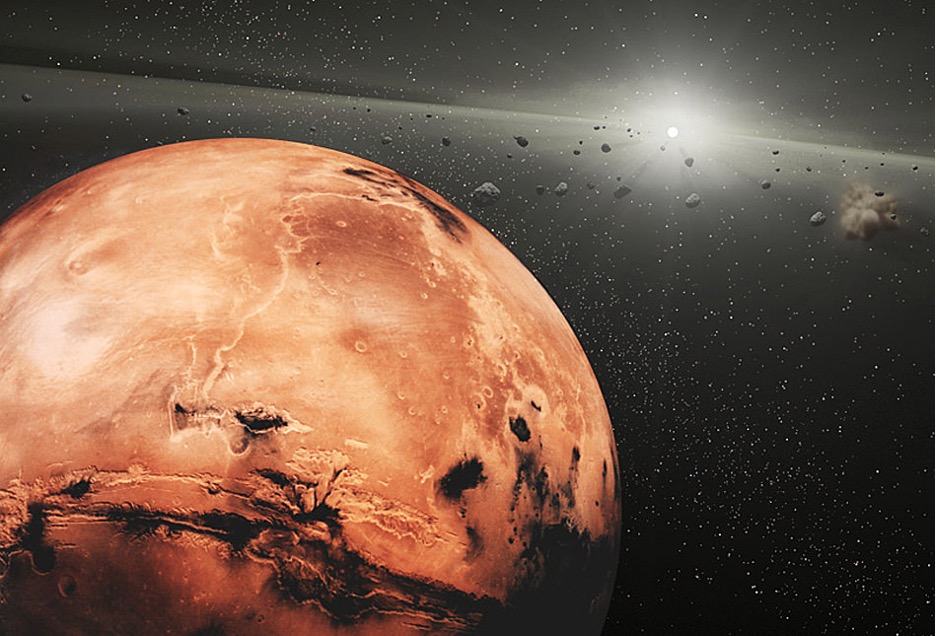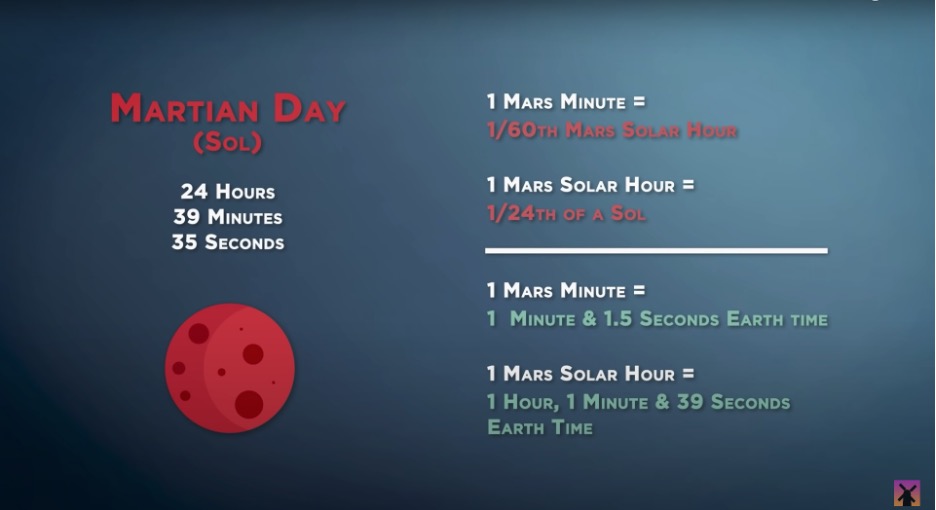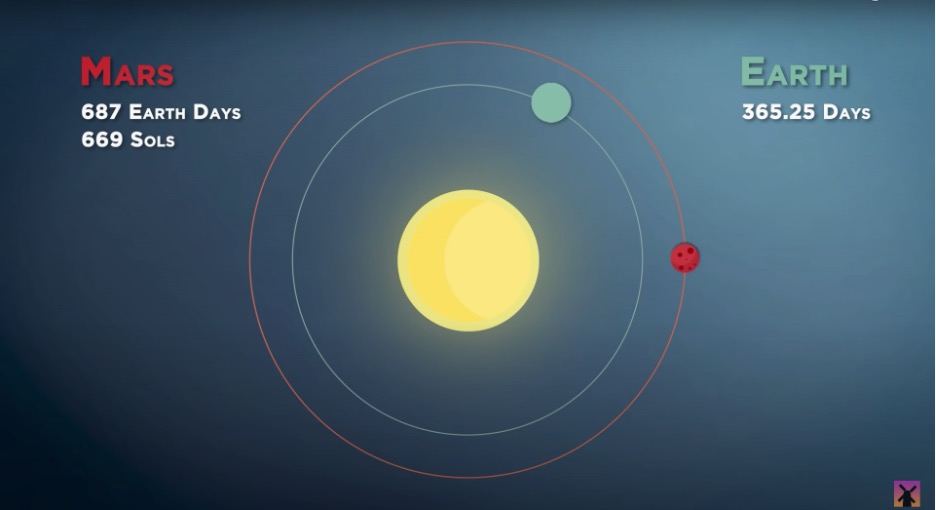How long is a day on Mars?
8th Sep 2023
Venus is the closest planet to Earth, but then why are we going to Mars? Alas, Venus is too hot for us, and a day there lasts incredibly long — ⅔ of an Earth year! But what about the length of a day on Mars?
In this article, we’ll look at how time flows on the Red planet: what’s a Martian year, how long is a day on Mars and why it is called a “sol”. Who knows, maybe someday you’ll go to Mars, and this information will be useful to you. So, let’s go! It’s going to be a hard day’s night!
How long is one day on Mars compared to Earth?
A day on Mars is slightly longer than a day on Earth. The Martian day lasts approximately 24 hours, 37 minutes, and 22 seconds. This makes it roughly 39 minutes and 35 seconds longer than an Earth day. So how long is a day on Mars in Earth days? It is about 1.03 of an Earth day.
Why is a Martian day longer than an Earth day?

The reason lies in the physical characteristics of the planets. Due to its lower mass, density and longer moment of inertia, the Red Planet rotates more slowly around its axis, which leads to an increase in Mars’s length of day.
This is a natural result of the evolution and formation of the planet. Each planet has its own unique rate of rotation due to its history and physical properties. Moreover, this speed may not be constant!
Since planets are constantly affected by various factors, such as the gravity of other celestial bodies, the distribution of mass within the planet, and interactions with the moons, their rotation speed can change, but over a very long period of time. So, for example, scientists believe that about 600 million years ago, during the late Proterozoic eon, a day on Earth lasted about 21.9 hours. So it’s possible that day on Mars was once shorter or longer.
Why is Martian day called “sol”?

The term “sol” was introduced by NASA for the convenience of referring to the length of a day on Mars; mostly, it was used to avoid confusion with Earth days in the context of interplanetary missions and time coordination on the Red Planet. The term was first used during the Viking mission in 1976, when the two mars rovers, Viking 1 and Viking 2, successfully landed on Mars.
The name “sol” comes from the Latin word “solid”, which means “sun”. The name was chosen to emphasize the connection with the length of the day, determined by sunlight, and the time it takes for the Red Planet to complete a full rotation around its axis.
Since then, the term “sol” has become the accepted way of referring to a Martian day and continues to be used in the scientific and engineering communities when discussing Martian missions and exploration.
How long is one Mars hour?

One Martian hour, often referred to as an “MTC” (Mars Time Coordinate), is approximately 1 hour, 2 minutes, and 41 seconds long. This is based on the fact that one Martian sol is approximately 24 hours, 37 minutes, and 22 seconds long. Therefore, dividing the Martian day by 24 yields the duration of one Martian hour.
How long is the night at Mars?
Since one sol day on Mars lasts 24 hours 37 minutes, we can conditionally assume that the average Martian night is 12.2 hours. However, we should remember that the duration of the night and daylight hours on Earth varies depending on the season and latitude. And what affects Mars’s length of day and night?
- Seasons and axial tilt: When one hemisphere of Mars is tilted towards the Sun, it’s Summer there, and the days get longer while the nights get shorter. At the same time, winter is in full swing in the other hemisphere, so the night is getting longer while the day is getting shorter.
- Latitude: Closer to the Martian poles, where the axial tilt is more pronounced, the length of day and night can vary greatly. In the equatorial regions, it remains more constant throughout the year.
- Orbit: Since the orbit of Mars has some eccentricity, instead of being completely circular, the Red Planet gets closer or further away from the Sun at different points in its orbit. Closer to the Sun, it receives more sunlight, which can shorten the night and increase the day, and vice versa.
- Atmosphere: The atmosphere of Mars can affect the distribution of sunlight and affect the visibility and light intensity at different times of the day.
Thus, the shortest night on Mars (several Earth hours) is observed in the equatorial regions during the Martian summer. And the longest one (sometimes up to six Earth months) is in winter in the South Pole region.
How long is a Martian year compared to Earth year?

The length of a year on Mars is 686.94 Earth days, or 669.56 sols, or 1.8 Earth years. This happens because Mars’s orbit has a larger radius and eccentricity than Earth’s orbit. In other words, Mars takes longer to complete one revolution around the Sun. Therefore, the Martian year is longer.
Conclusion
So, for now, this is all the knowledge we have to answer the question of how long is a day on Mars. It seems like a lot. But we are sure that we will learn much more when the first settlers come to Mars and stay there for more than one hard day’s night.






Thank you for your comment! It will be visible on the site after moderation.